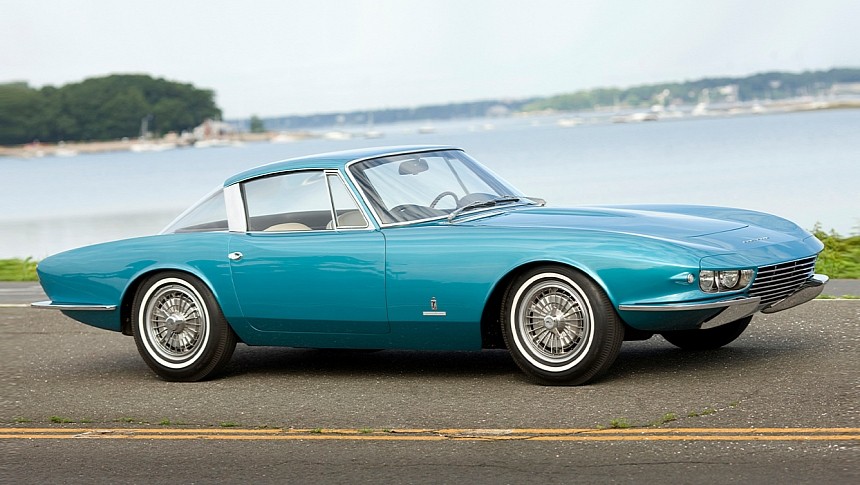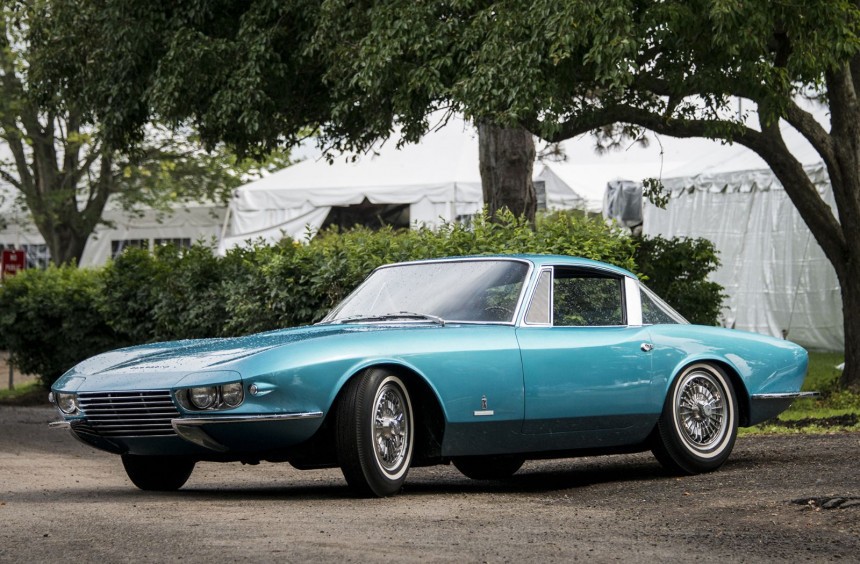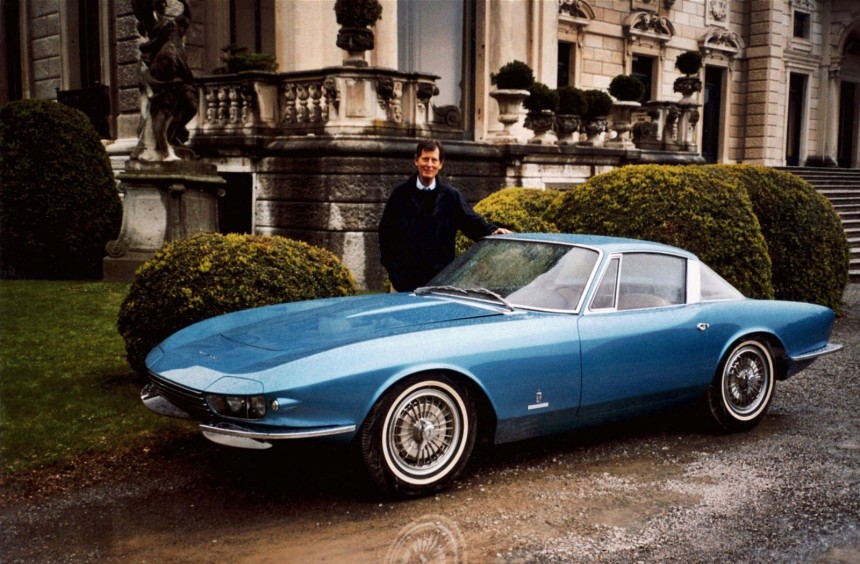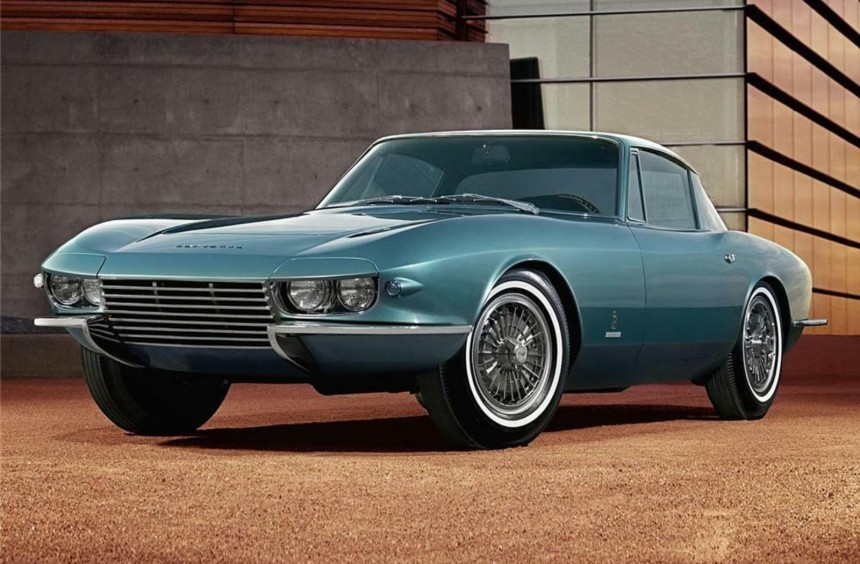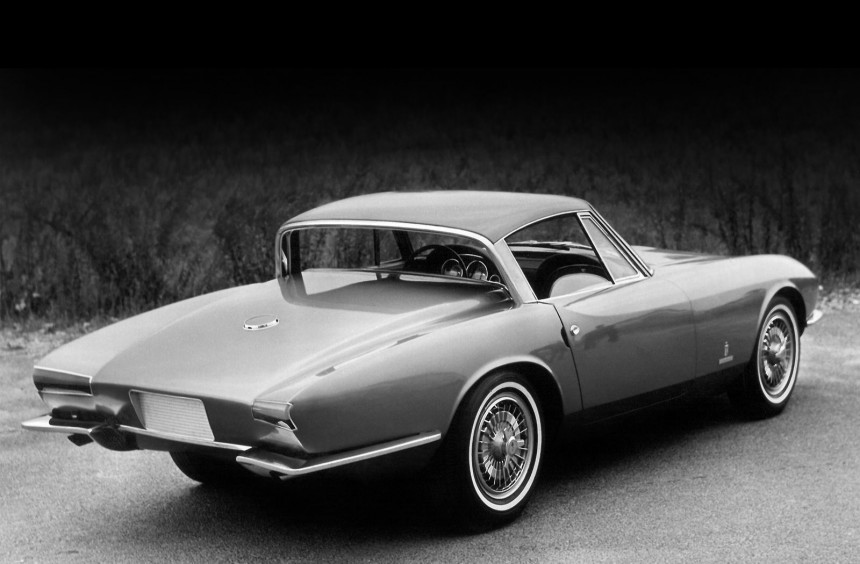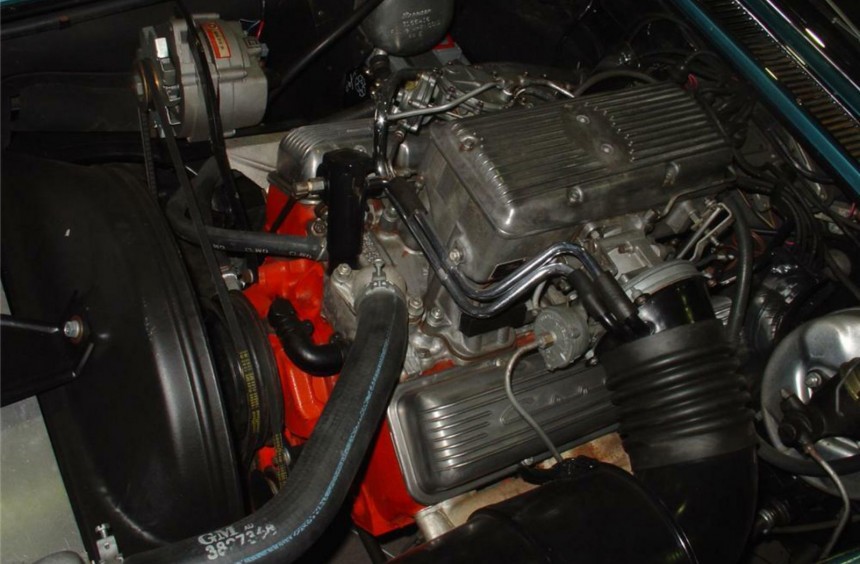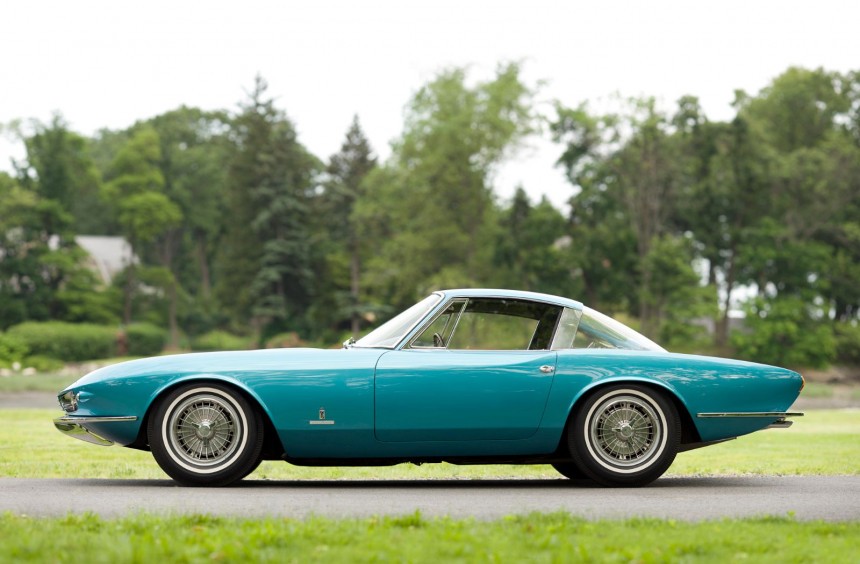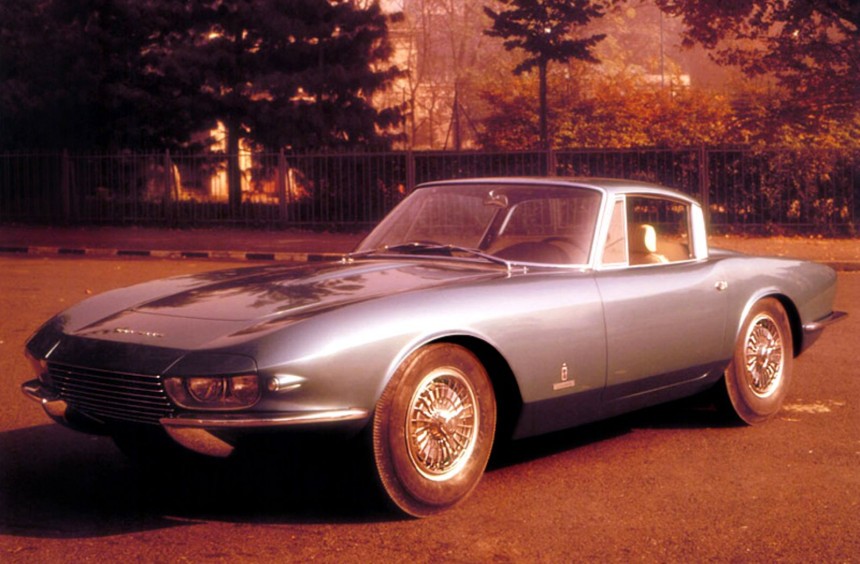Coachbuilt by Pininfarina, the Corvette Rondine looked more like a Ferrari from the 1960s than the C2 it was based on.
During its 70-year history, the Chevrolet Corvette became America's most beloved sports car and one of the most legendary vehicles ever built in the US.
Always reasonably priced and available with powerful and reliable V8 engines, it has been a popular choice for European manufacturers who used the 'Vette as the base for some beautiful models.
Furthermore, several generations of America's favorite sports car have been fitted with bespoke bodies by some of Europe's most prestigious coachbuilders.
Famous examples include the Scaglietti Corvette, developed with help from Carroll Shelby, and the Kelly Corvette, built by Carrozzeria Vignale.
Another Corvette dressed in an Italian designer suit that deserves to be remembered is the 1963 Rondine, a one-off created by Pininfarina.
Unlike the abovementioned re-bodied 'Vettes, this exquisite one-off was not commissioned by a Corvette owner who wanted a unique ride.
The story of this car starts several months after the official introduction of the C2 when GM chief stylist Bill Mitchell got a call from close friend Sergio Pininfarina.
Back then, every established coachbuilder had to turn up at Europe's top auto shows with something new to remain relevant, and Ferrari's go-to design house had nothing to show for the upcoming 1963 Paris Motor Show.
Rather than re-body a Ferrari, the company boss reasoned that working on the cheaper C2 would be a better idea, especially since he could probably source a chassis for free from his American friend.
Of course, Mitchell agreed to help and even allowed the coachbuilder to use the Corvette nameplate.
The Italians went to work, and in just a few months, the concept dubbed Rondine (swallow in Italian) was ready for its public unveiling.
Doning a steel body instead of the stock fiberglass structure, the Rondine was a daring reinterpretation of the C2.
Designed by Pinninfarina's American-born stylist Tom Tjaarda, the concept car retained the Sting Ray's long nose and short tail look, but the bodywork was entirely reworked, with an emphasis on oozing elegance from free-flowing simplicity.
The outer structure became noticeably longer than the original C2 body, giving the car a distinct European grand tourer look.
The Rondine's sloping nose with partially covered headlamps and an ample grille flanked by subtle bumpers was a bold departure from the sharp-edged front fascia of the C2.
The same formula of reducing sharp edges was applied to each side, resulting in a gorgeously flowing waistline that harmoniously joined the sloping front end with the slightly bulged lines of the rear quarter and the receding tail that gave the concept its name.
While the front and side profile, the rear end of the Rondine was a bold mix of aggressive lines. Tjaarda discarded the rounded taillights of the stock Sting Ray, replacing them with larger, rectangular variants that complemented the edgy, swallow-inspired theme of the tail.
Inside, the Rondine was more C2 than a one-off. The dashboard, center console, and seats were retained, but the latter, along with the door panels, were upholstered in premium white leather.
Though little details from the development stage of this fantastic concept have survived, some early photos (like the one above) suggest that the Rondine's roof featured an integrated roll-bar-like structure that made up the B pillars.
Moreover, it seems that it didn't feature a rear window, which might have made the car look futuristic and bold but also unfinished.
Probably because this design feature was controversial (similar to the C2 coupe's split-window arrangement), the rear section of the roof was subsequently redesigned, receiving a large wraparound rear window.
While the handcrafted steel body oozed Italian luxury, the Rondine remained a thoroughbred American Corvette underneath.
Even if the car had longer front and rear overhangs, the chassis didn't receive any modifications, boasting the suspension setup and power-assisted disc brakes of the mass-produced C2.
The powertrain was also stock, comprising a naturally aspirated 360-hp Rochester fuel-injected, 327-ci (5.4-liter) small-block V8 linked to a four-speed Borg-Warner manual transmission.
At the 1963 Paris Motor Show, the Rondine was met with a positive reaction by the public and the press.
It continued to tour the Old Continent's most prestigious auto show the following year, after which it was displayed at the Pininfarina Museum in Turin.
During the late 2000s, as Pininfarina was struggling to survive and pay off its enormous debt, management decided to part ways with several concepts, including the Rondine.
Therefore, the bespoke Corvette found its way under the hammer in 2008. It was sold at a Barret-Jackson event for the better part of $1.8 million to American collector and classic car dealer Michael Schudroff.
While scouring the World Wide Web for information about the Rondine, I found several articles perpetuating the same common misconception.
Almost every single one states that the concept was commissioned by Chevrolet, which is not only false but makes absolutely no sense.
The GM division had just introduced the redesigned C2 in 1962 (for the 1963 model year). Since the powertrains were carried over from the C1, the Sting Ray's main selling point was the completely new body that now featured a split-window, fastback coupe option, so commissioning another design concept made no sense.
The same articles state that the car was subsequently featured in the Pininfarina Museum, which is true. So, if it had been a Chevy-commissioned concept, the unique car would have been destroyed or displayed at the GM Heritage Center.
Misconception aside, the 1963 Rondine was a beautiful example of Italian coachbuilding excellence that remains one of the most beautiful classic Corvette concepts.
Always reasonably priced and available with powerful and reliable V8 engines, it has been a popular choice for European manufacturers who used the 'Vette as the base for some beautiful models.
Furthermore, several generations of America's favorite sports car have been fitted with bespoke bodies by some of Europe's most prestigious coachbuilders.
Famous examples include the Scaglietti Corvette, developed with help from Carroll Shelby, and the Kelly Corvette, built by Carrozzeria Vignale.
Another Corvette dressed in an Italian designer suit that deserves to be remembered is the 1963 Rondine, a one-off created by Pininfarina.
A Pininfarina show car
Unlike the abovementioned re-bodied 'Vettes, this exquisite one-off was not commissioned by a Corvette owner who wanted a unique ride.
The story of this car starts several months after the official introduction of the C2 when GM chief stylist Bill Mitchell got a call from close friend Sergio Pininfarina.
Back then, every established coachbuilder had to turn up at Europe's top auto shows with something new to remain relevant, and Ferrari's go-to design house had nothing to show for the upcoming 1963 Paris Motor Show.
Rather than re-body a Ferrari, the company boss reasoned that working on the cheaper C2 would be a better idea, especially since he could probably source a chassis for free from his American friend.
Of course, Mitchell agreed to help and even allowed the coachbuilder to use the Corvette nameplate.
The Italians went to work, and in just a few months, the concept dubbed Rondine (swallow in Italian) was ready for its public unveiling.
Handcrafted in Italy but designed by an American
Designed by Pinninfarina's American-born stylist Tom Tjaarda, the concept car retained the Sting Ray's long nose and short tail look, but the bodywork was entirely reworked, with an emphasis on oozing elegance from free-flowing simplicity.
The outer structure became noticeably longer than the original C2 body, giving the car a distinct European grand tourer look.
An elegant, front end and side profile mixed with a futuristic tail
The same formula of reducing sharp edges was applied to each side, resulting in a gorgeously flowing waistline that harmoniously joined the sloping front end with the slightly bulged lines of the rear quarter and the receding tail that gave the concept its name.
While the front and side profile, the rear end of the Rondine was a bold mix of aggressive lines. Tjaarda discarded the rounded taillights of the stock Sting Ray, replacing them with larger, rectangular variants that complemented the edgy, swallow-inspired theme of the tail.
Inside, the Rondine was more C2 than a one-off. The dashboard, center console, and seats were retained, but the latter, along with the door panels, were upholstered in premium white leather.
The controversial feature that was ultimately redesigned
Moreover, it seems that it didn't feature a rear window, which might have made the car look futuristic and bold but also unfinished.
Probably because this design feature was controversial (similar to the C2 coupe's split-window arrangement), the rear section of the roof was subsequently redesigned, receiving a large wraparound rear window.
All-American underneath
Even if the car had longer front and rear overhangs, the chassis didn't receive any modifications, boasting the suspension setup and power-assisted disc brakes of the mass-produced C2.
The powertrain was also stock, comprising a naturally aspirated 360-hp Rochester fuel-injected, 327-ci (5.4-liter) small-block V8 linked to a four-speed Borg-Warner manual transmission.
From an Italian museum to a private collection in the US
It continued to tour the Old Continent's most prestigious auto show the following year, after which it was displayed at the Pininfarina Museum in Turin.
During the late 2000s, as Pininfarina was struggling to survive and pay off its enormous debt, management decided to part ways with several concepts, including the Rondine.
Therefore, the bespoke Corvette found its way under the hammer in 2008. It was sold at a Barret-Jackson event for the better part of $1.8 million to American collector and classic car dealer Michael Schudroff.
It was not commissioned by Chevrolet
Almost every single one states that the concept was commissioned by Chevrolet, which is not only false but makes absolutely no sense.
The GM division had just introduced the redesigned C2 in 1962 (for the 1963 model year). Since the powertrains were carried over from the C1, the Sting Ray's main selling point was the completely new body that now featured a split-window, fastback coupe option, so commissioning another design concept made no sense.
The same articles state that the car was subsequently featured in the Pininfarina Museum, which is true. So, if it had been a Chevy-commissioned concept, the unique car would have been destroyed or displayed at the GM Heritage Center.
Misconception aside, the 1963 Rondine was a beautiful example of Italian coachbuilding excellence that remains one of the most beautiful classic Corvette concepts.
